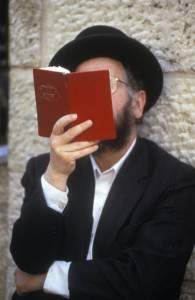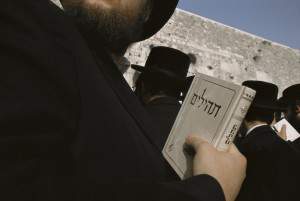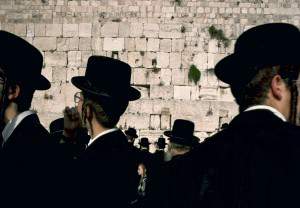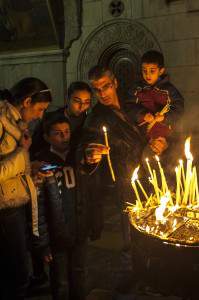 I am unapologetically an old-school photographer. I grew up in the era of film and darkrooms and the smell of fixer still fills me with nostalgia. Shooting film, particularly slide film with its narrow latitude, was great for building impeccable technique.
I am unapologetically an old-school photographer. I grew up in the era of film and darkrooms and the smell of fixer still fills me with nostalgia. Shooting film, particularly slide film with its narrow latitude, was great for building impeccable technique.
In the early 1980’s I did several shoots for National Geographic, always in some remote corner of the world for several months at a time and racking up huge expenses. I would shoot several hundred rolls of 35mm film, usually Kodachrome, and ship the exposed film back to Geographic in Washington DC for processing without having a clue if I’d got the shot or even the correct exposure. Mistakes were not an option. The first person to see the results was my editor.
Miraculously I rarely screwed up but if I had to shoot film now I would be terrified.
My first foray into the digital world was in 2001. I was invited to take part in A Day in the Life of Africa and Olympus was a major sponsor giving each of us their state-of-the-art E20 camera. It had a fixed zoom lens and captured images that, for the time, were an amazing 5MP. Few of us had shot with digital cameras and we were told to shoot jpegs. We didn’t know any better but the results were amazing. For the first time we could immediately see if we had the shot (this was the birth of chimping). The photographs looked great blown up to a double-page spread in the large-format book and I was almost sold.
The first DSLR that I thought could match film was the Nikon D2x and I bought one as soon as it was released. I haven’t used film since but those years of old-school, film photography certainly paid off. They instilled me with a rigor that is too easily evaded with today’s auto exposure, auto focus cameras. I fully embrace digital photography but I am fundamentally a photographer, not a computer technician. I have no desire to spend a large chunk of my life looking at a computer screen. I want to be out making photographs.
The dark side of digital got my attention a few weeks ago when I was judging a local photographic club competition. A category called “Creative” suggested that other categories were non-creative and that to be creative you had to digitally manipulate the image. I ruffled a lot of feathers that evening by daring to criticize the mediocre excuses for photography that were submitted. The overriding attitude seemed to be that you can shoot any ill conceived photograph, add a bit of digital manipulation, throw in a few effects and it is transformed into art.
In the interests of full disclosure, I have never been fond of manipulated photographs whether it is Man Ray or Jerry Uelsmann. I respect the vision and craftsmanship but I’m not attracted to it. It’s not my taste. The problem with an overwhelming number of current manipulated images is that there is not even any vision. A fundamentally mediocre photograph cannot be rescued by the application of a digital crutch.
Today, there is an overwhelming interest in digital technique as an end in its self and there are a growing number of “photographers” that have become obsessed with computer manipulation. At best the results can be beautiful but far too often they look exaggerated and artificial.
 Photography should be fun and if this is what you enjoy, who am I to stop you? Just don’t count me in – I’m old school. Personally, I prefer to be out shooting and making photographs that look real, not spending hours in front of a computer creating unnatural looking images.
Photography should be fun and if this is what you enjoy, who am I to stop you? Just don’t count me in – I’m old school. Personally, I prefer to be out shooting and making photographs that look real, not spending hours in front of a computer creating unnatural looking images.
The overwhelming problem with digital photography for me is asset management. I have dozens of file cabinets housing half-a-million slides and I can access any image in a few minutes. Although I rarely delve into my archives these days, it’s comforting to know that these physical pieces of film exist. I have now had to add several terabytes of hard drive space and unless I am completely anal about detailed captioning and numbering I can lose an image forever. Added to this is the unreliability of hard drives and the need to back up everything at least once. I keep my selects on three different drives and upload low compression jpegs to an online service called Photoshelter. The transient nature of photographs stored as a bunch of pixels makes me very nervous.
The digital age has greatly affected the way we respond to photographs and “The photograph doesn’t lie” is a saying of the past. Who takes a photograph at face value these days? What a pity! As an old-school documentary photographer my aim has always been to capture reality, even if it is my subjective view of that reality.
In 1994 I was one of 100 international photojournalists invited to take part in A Day in the Life of Israel, which resulted in one of my own favorite photographs I took at the Western Wall in Jerusalem. The area was filled with Hassidim in their traditional black clothes and black hats. I knew that I wanted to make a strong, symbolic image of this iconic holy site and decided that the way to do this was by eliminating faces and concentrating on the graphics created by silhouetted worshipers. A good photograph needs punctuation – a splash of color, a gesture, a small element that brings the photograph to life and I searched for elements that fit my vision. These included a long lens shot of an old man reading a copy of the Talmud and a wide angle shot of a group with a copy of the Talmud as punctuation but they were not quite what I wanted to say.
 Two hours and almost 10 rolls of Kodachrome later, serendipity happened. I was making adequate pictures of the sea of black hats against the Western Wall when the crowd opened up and an angelic little boy with long ringlets appeared as if lit by a spotlight.
Two hours and almost 10 rolls of Kodachrome later, serendipity happened. I was making adequate pictures of the sea of black hats against the Western Wall when the crowd opened up and an angelic little boy with long ringlets appeared as if lit by a spotlight.
Perfect punctuation!
Of course this made it into the book and garnered a few awards, so what is the purpose of this rambling tale? When I show the photograph today the automatic response is Photoshop!
This may be one of the best and hardest earned photographs I have ever taken and its value has been diminished by the ease with which this could have been accomplished in a few minutes on a computer – and nobody can tell the difference. Call me a bitter old stick-in-the-mud but at least I know how to take good honest photographs.
 I sound as though digital photography is an invention of the devil but I fully embrace the technology and I can now take photographs that would have been almost impossible with film.
I sound as though digital photography is an invention of the devil but I fully embrace the technology and I can now take photographs that would have been almost impossible with film.
I was back in Jerusalem this year and revisited the Church of the Holy Sepulcher, which is so dark that 20 years ago I gave up on trying to get acceptable shots. I have never been a fan of strobes and even if their use had been allowed the wonderful atmosphere would have been destroyed without an elaborate and which is so dark that 20 years ago I gave up on trying to get acceptable shots. I have never been a fan of strobes and even if their use had been allowed, the wonderful atmosphere would have been destroyed without an elaborate and totally impractical lighting setup. With my Nikon D4 set at 2500ISO I was able to take hand-held photographs, with minimal noise, by candlelight. I have always loved to work at the edge of light and the current full-frame DSLRs are a dream come true.
Would I go back to film? No way!
But please release me from the computer.
